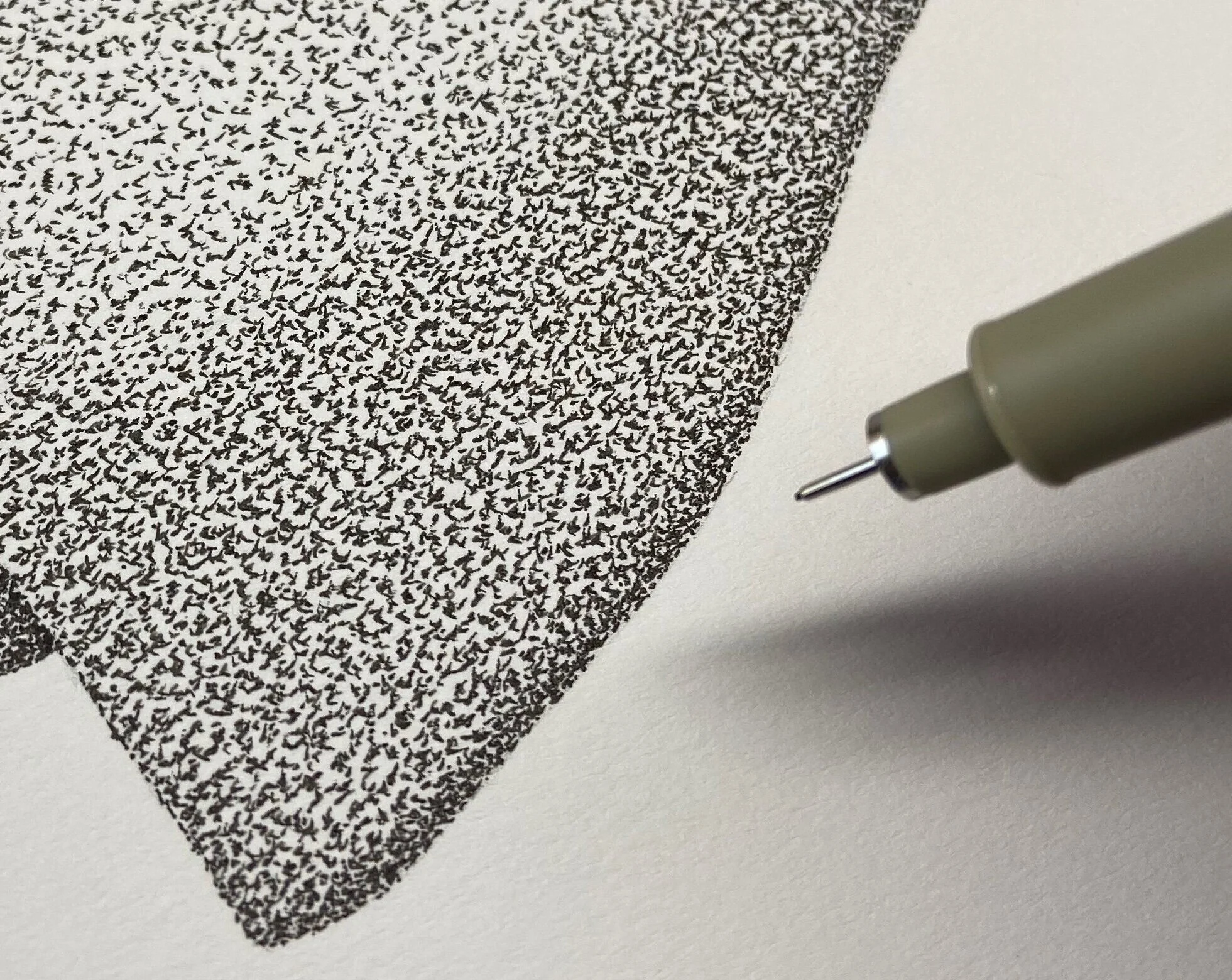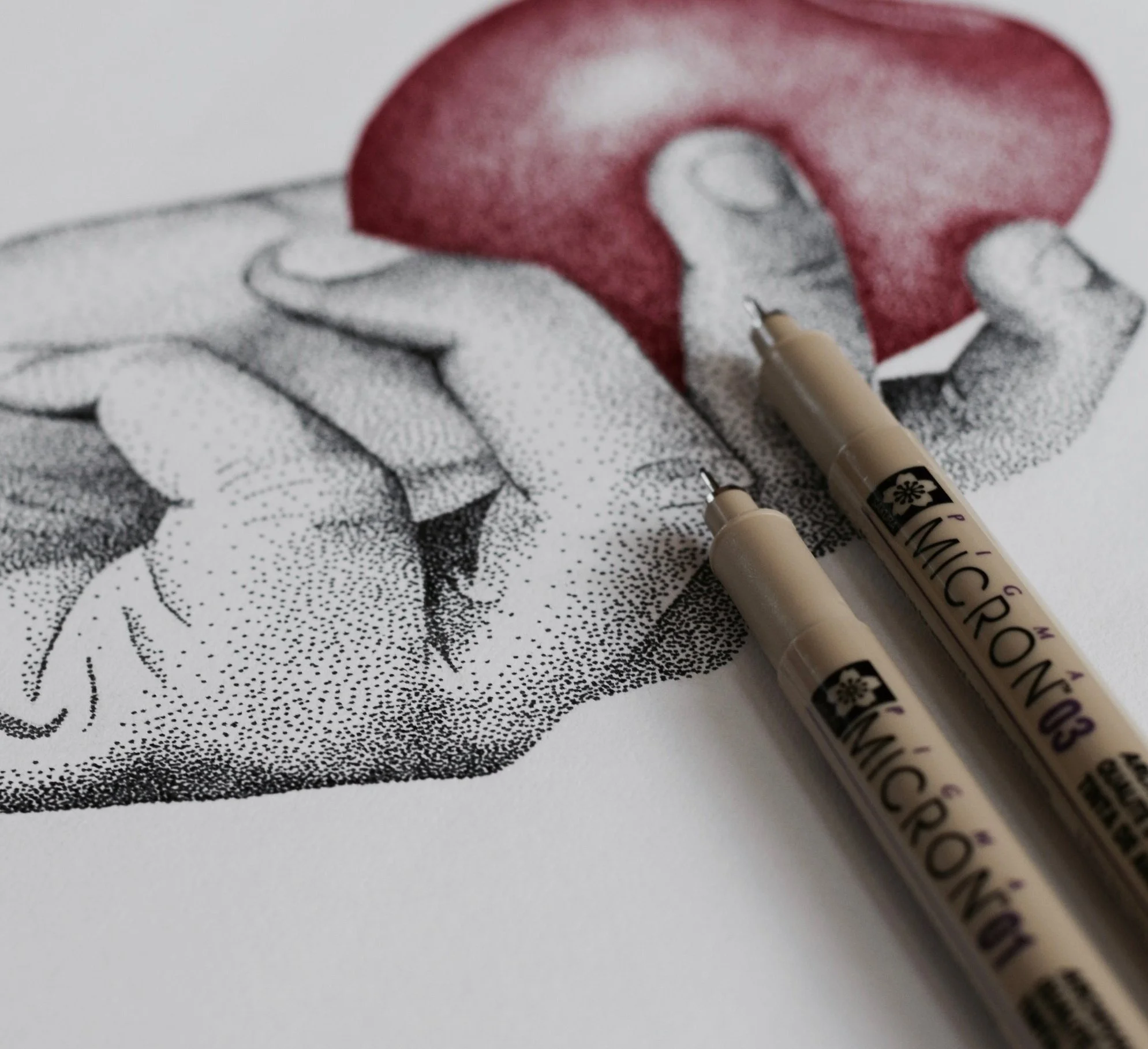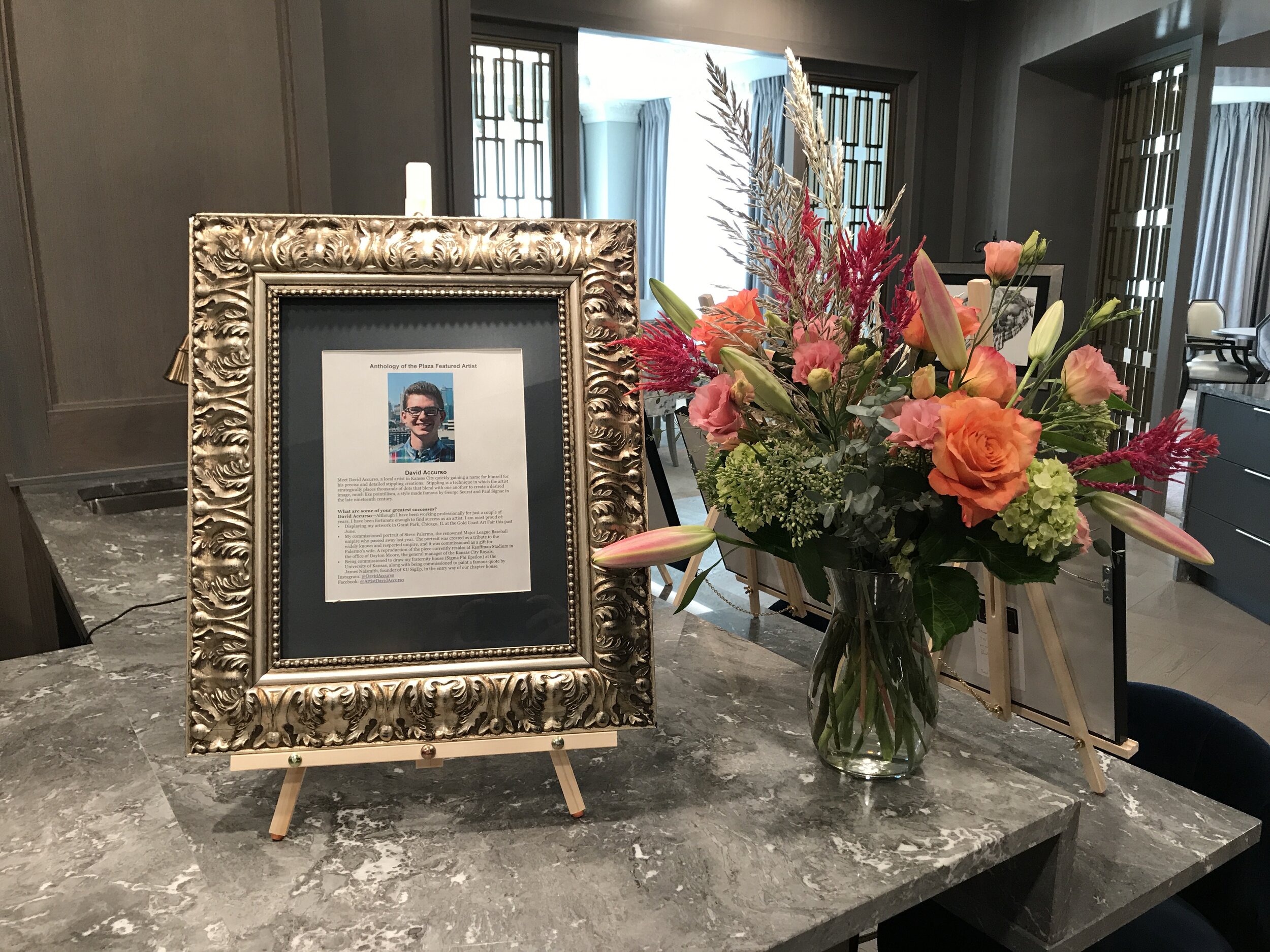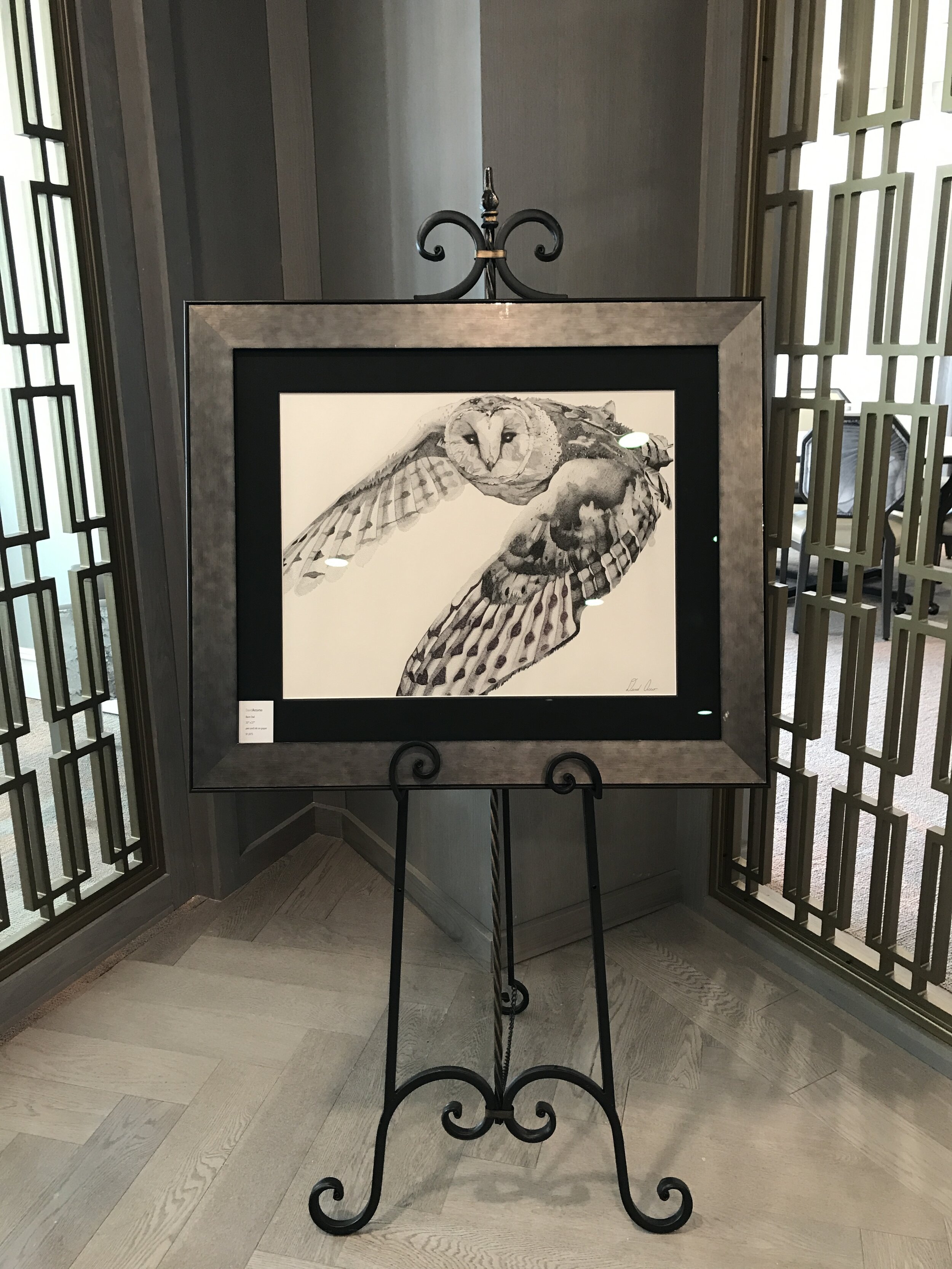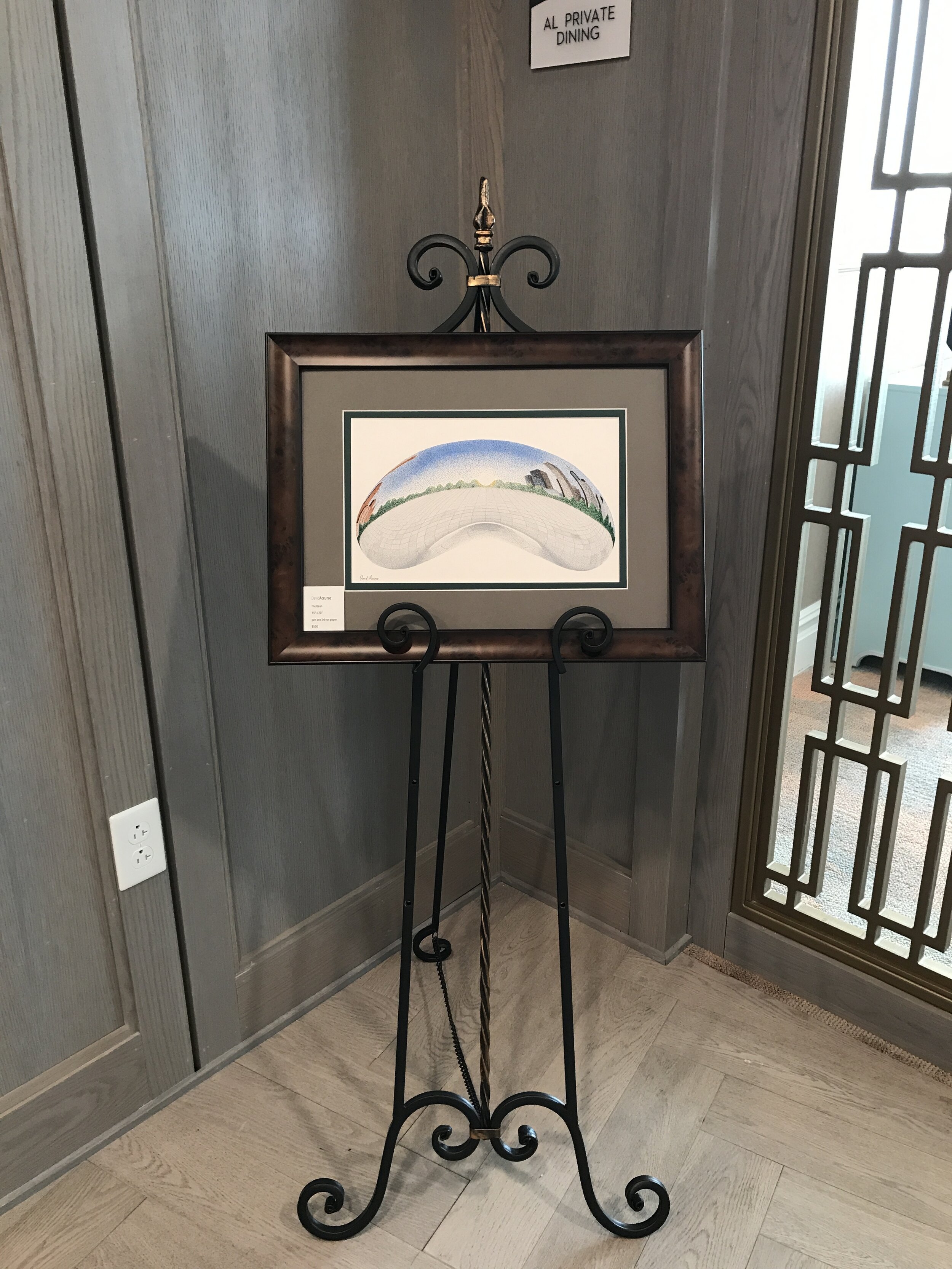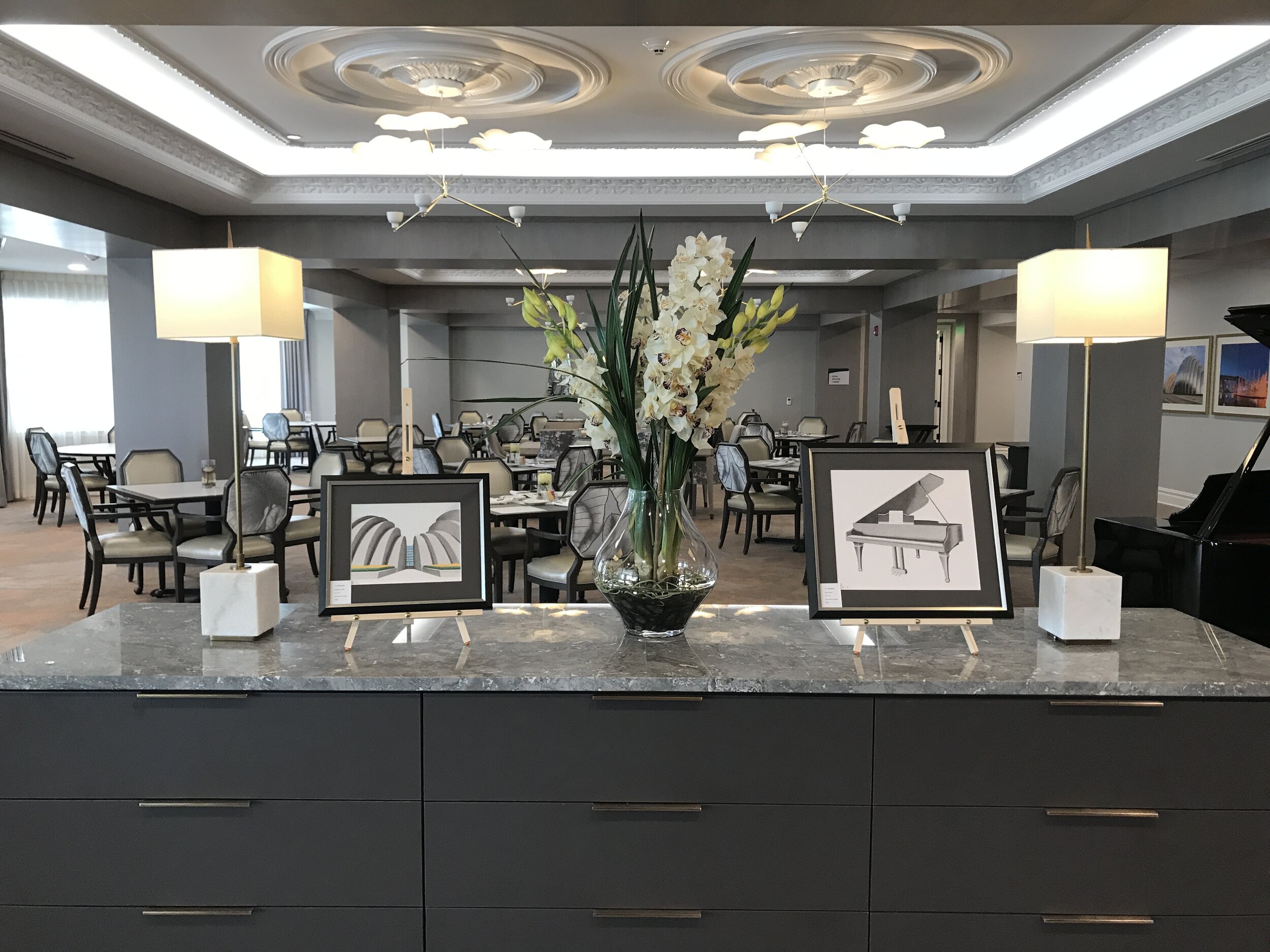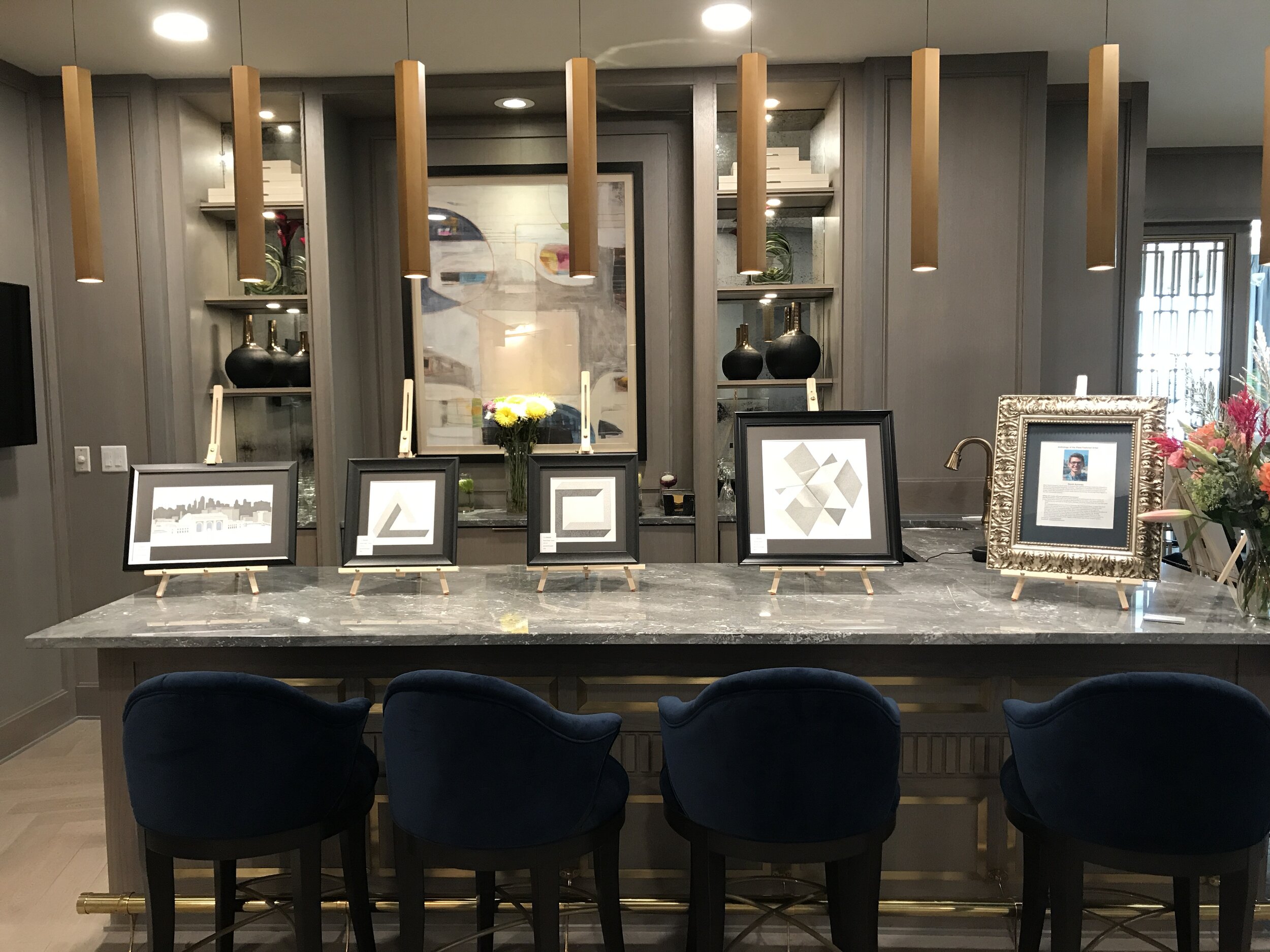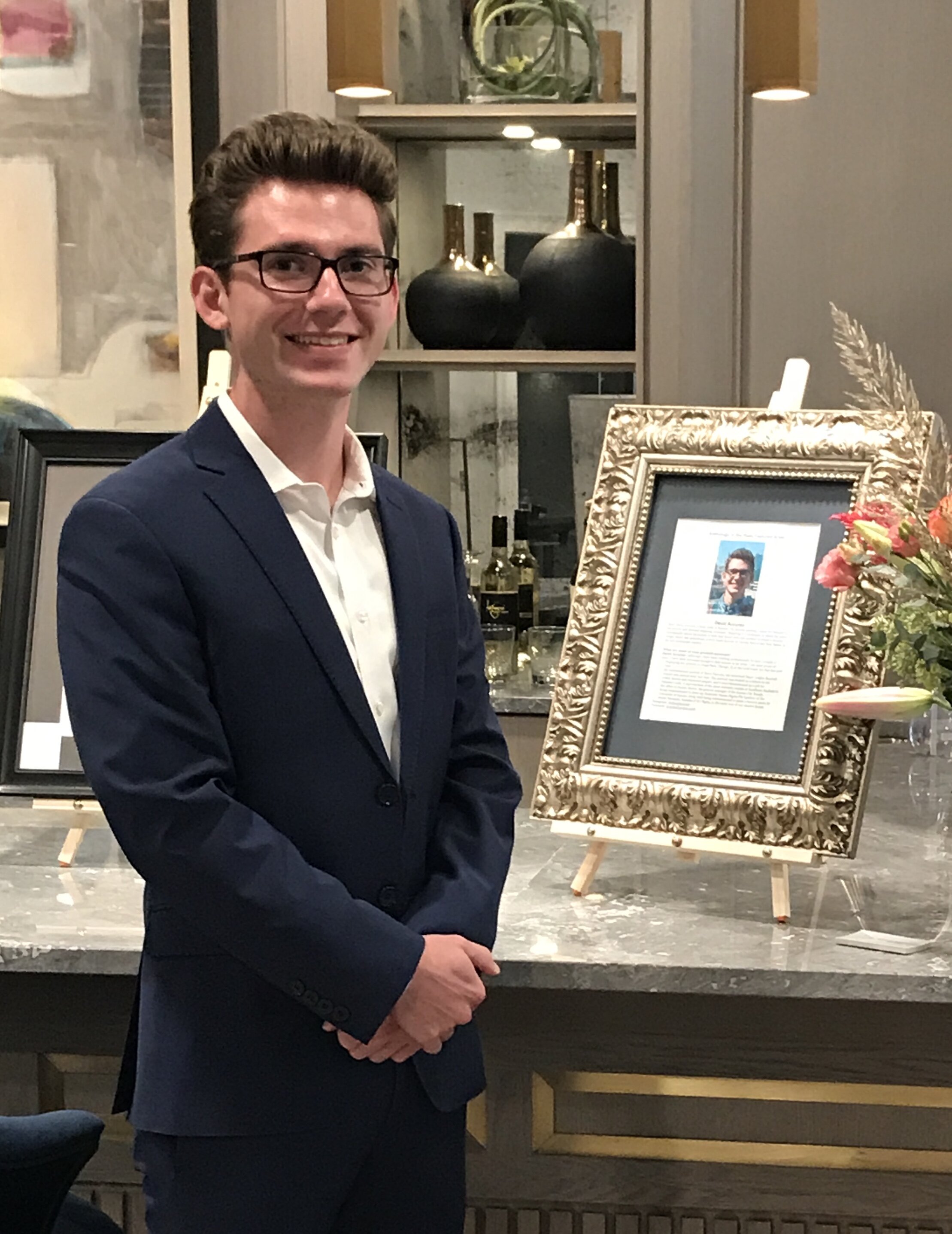Stippling art is the process of using a number of small dots to create a desired image or pattern. In the stippling technique, the dots are applied using pen and ink, and they are typically made up of a single color. Black and white is the most common pigment choice. The artist manipulates the spacing of dots to create different shades throughout the drawing. As a general rule of thumb, the denser the placement of dots, the darker the shade the artist will achieve. Value changes in stippling art can also be achieved by varying the thickness of the dots applied (thicker dots are best for darker shades and vice versa).
The Appeal of Stippling Art
Stippling art possesses unique aesthetic character compared to other drawing and painting techniques. When looking at a stippling piece from a distance, it may appear as a regular drawing or image until the viewer gets close enough to recognize the series of dots used to create the artwork. Stippling art also allows artists to be deliberate and precise in their creation of shadows and highlights. The slow process of placing individual dots allows the artist to control how dark or light they want their shades to be. The slow pace of this technique also provides the opportunity to recognize issues early on and correct them.
History of Stippling Art
The process of stippling was invented by Giulio Campagnola in 1510. Campagnola was a renowned engraving artist that invented the stippling technique to improve his variations of tone. At this point in history, engraving was typically done by hatching or cross-hatching. Campagnola figured out that engraving small dots, instead of lines, allowed him to create smoother transitions of tone. In addition to improving visual art, this new technique led to major innovations in printmaking as it allowed pressmen to transfer photographs into newspaper images.
Stippling versus Pointillism
Stippling art is often confused with the similar process of pointillism. In both techniques, the artist uses a series of dots to create a desired image. However, there are two distinctions between the two. First, stippling is done with pen and ink while pointillism uses paint and brush. Second, stippling art is normally done with a single color scheme and avoids blending dots of different colors. Pointillism is unique in that it incorporates different dot colors that blend together to create desired shades of color. This painting technique was developed by Georges Seurat and Paul Signac in the 1880s. It was initially created as a response to the more popular style of Impressionism. The technique remained popular and was later used by several famous artists such as Van Gogh and Picasso.
Tools and Supplies
If you are interested in creating stippling art, you will need a few supplies to get started. First, you need to select a heavy drawing paper that absorbs ink well. Bristol paper is great to start with. You will also want to avoid glossy paper because of its tendency to smear ink. Next, a pencil and eraser are necessary for sketching out the subject of the drawing. It is important to sketch as many details as possible to make the stippling process easier. Lastly, you need to select which pens to use. Micron and Copic pens are two great choices and are a go-to pen for many stippling artists. Both offer a wide range of tip sizes and are ideal for creating consistent dots. Experimenting with different tip sizes will help you determine which pens to use for large and small scale stippling art.
David Accurso’s Stippling Art
Emergence | 11” x 14”
David has created a wide variety of stippling art over the course of his career. He enjoys the challenge a new subject presents, and he has created many such as flowers, homes, portraits, churches, still lifes, hands, geometrics, inanimate objects, and more. As mentioned before, stippling is most commonly done in black and white, and stippling artists will typically stick with one color throughout the creation of a piece. David chooses not to limit himself to one color, and he oftentimes incorporates splashes of color that give his stippling art a unique, recognizable quality. His incorporation of color is also one of the reasons why he has been able to create so many different pieces. Stay up to date with David’s latest work by viewing his portfolio, and be sure to check out his shop to browse his selection of art prints.
